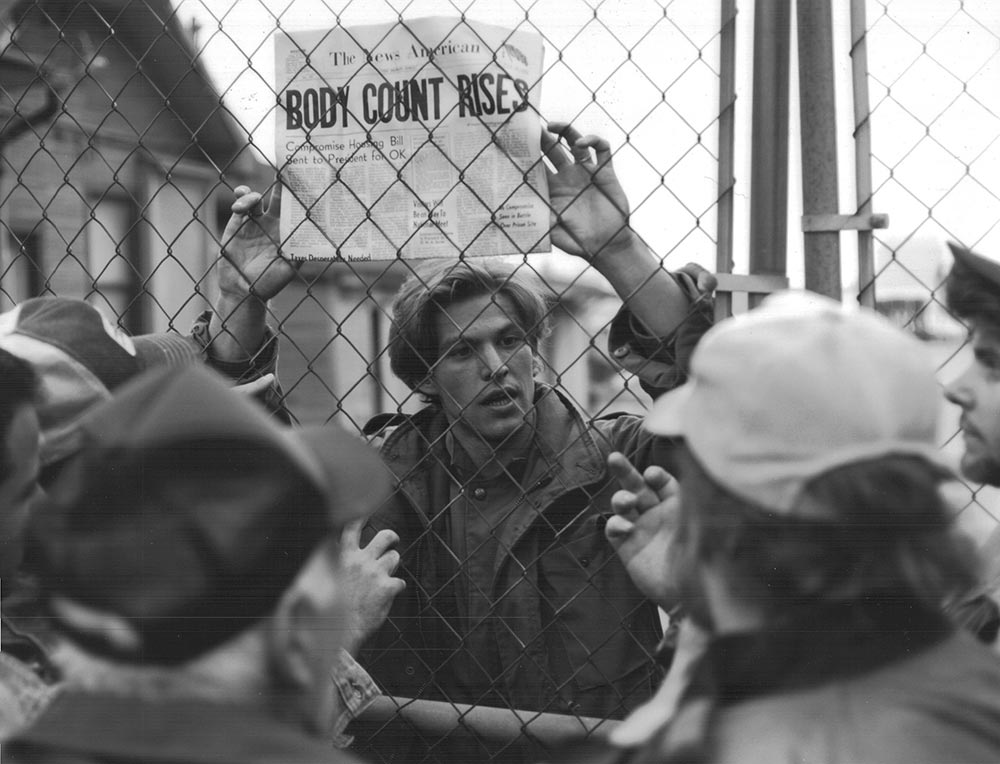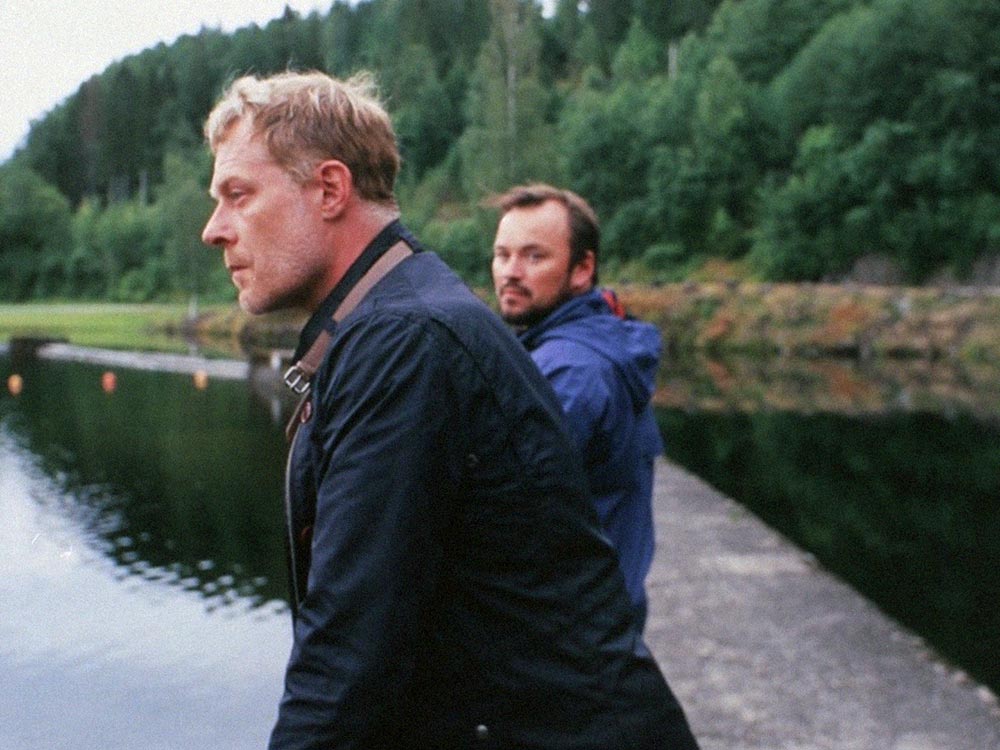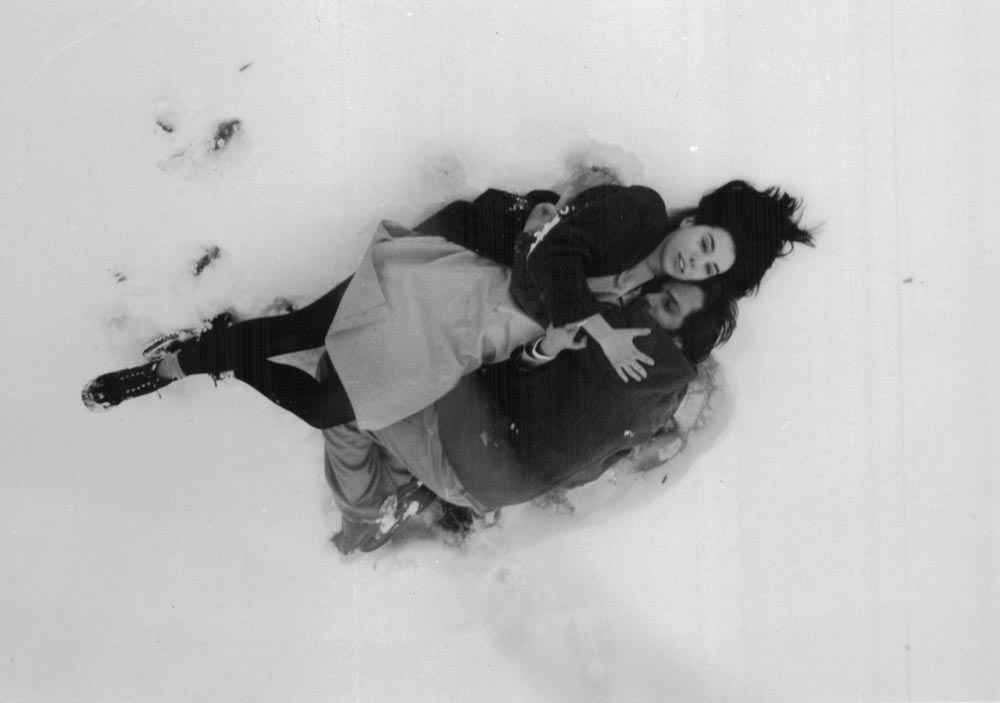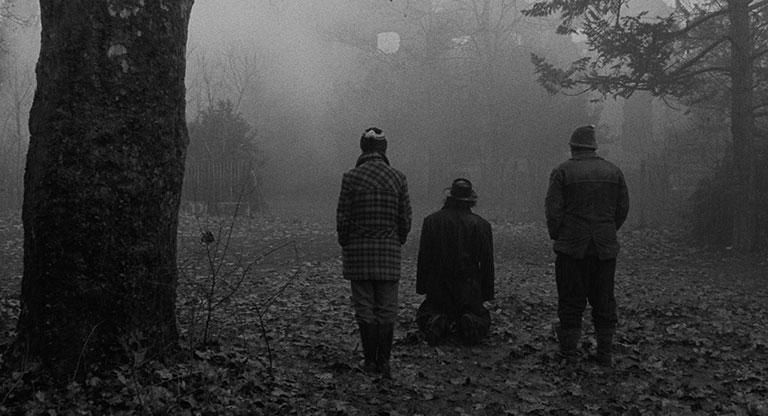Like many truly independent artists working on the margins and facing shrugs from curators and distributors, Rob Tregenza’s work is more often mentioned than seen. It’s hardly mentioned either, save by a few high-profile champions. He’s been celebrated in print by Jonathan Rosenbaum and Dave Kehr, and more recently by Richard Brody, who named Tregenza’s most recent film, Gavagai, one of the best films of 2018. Brief collaborations with both Béla Tarr—for whom he served as one of seven cinematographers on Werckmeister Harmonies (2000)—and Jean-Luc Godard—who produced Tregenza’s third feature, Inside/Out (1997), and quoted his debut, Talking to Strangers (1988), at length in Histoire(s) du cinéma—kept his name in film journals while his reputation teetered between arthouse footnote and auteur for further study. The Museum of Modern Art’s four-day comprehensive survey of Tregenza’s directorial work, organized by Kehr, may jumpstart better circulation for these four films of incredible pictorial beauty that have nonetheless been insulted by hideous home-video transfers, or else have been unavailable entirely.
In the late 1980s, while Béla Tarr was crystallizing his monochromatic long-take style and Richard Linklater wandered among those keeping Austin weird, Tregenza’s Talking to Strangers pulled off a sublime stunt: nine loosely-connected vignettes, each filmed exactly once in a single long-take, and assembled in random order apart from the first shot and the last. If nothing else, the film’s 1:1 shooting ratio is the definition of indie resourcefulness against a customarily profligate medium. The lead character, Jesse, is a broke writer who ambles around Baltimore in search of art’s raw materials: money, inspiration, and experience. Tregenza locates a heroic reverence for Art in the heart of this smug interloper who haunts soup kitchens and underpasses only to be accosted by the unfortunates who lack the privilege of his transience. Each of the interior sequences proceeds like a one-act play, with chewy lines for eager actors. A bank teller is tortured by phone calls from an irate husband who forced her to abort a pregnancy; thugs contemplate good and evil while joyriding on a city bus; a priest in a confessional discusses the difference between faith and religions; a sculptor compares art and sex work. In each case, Tregenza’s camera ambulates around the performers as they enter and exit the frame. In each shot, every performer’s presence is cast back into the frame even when they are physically absent. The traditional film grammar of cuts and eyelines diligently constructs a dramatic space no more or less “true” or legible than the geography of an unbroken shot, but the latter maps onto our experience of time and space more immediately. When an actor exits the frame, unconscious calculations suggest how far they can get from our gaze.

In the first few minutes of The Arc (1991), Tregenza uses more shots than in the entirety of Strangers. In a montage set to electric cringe blues, welder John Butz enjoys domestic bliss while rising through the union ranks at a postwar shipyard until affairs, debt, a miscarriage, and antiwar movements push him out on the lam. Tregenza settles back into long(er) takes as Butz crosses the country working odd jobs and deploying his welding skill when he’s needed to liberate an infant from a car wreck or assist a pretentious artist in wowing a collector with "conceptual" sculpture. Like Jesse, he’s a soulful itinerant trying (somewhat less obnoxiously) to satisfy a lust for meaning in a landscape of post-industrial alienation. He’s prone to writerly pronouncements like “Head west. It’s where the roads go. It’s where the sun goes.” The film admires him from a distance, not quite buying his righteous freedom-monger shtick, but rooting for someone like him to secure a modest place in such a stupidly vast country.
Tregenza abandoned color for Inside/Out and sited the next stop of his tour through decommissioned Americana in a mid-century psychiatric hospital. The camera winds through a decaying campus as patients repeatedly abscond only to be intercepted by uniformed authority and returned to a regime of care. The script features minimal dialogue, and the film consequently produces a simultaneously material and symbolic study of their incarceration. Without names and explicit histories, the patients become allegorical figures pitted against the hydra-headed Establishment, which cackles or moans at their suffering according to its whims. But Tregenza is equally drawn to the visual and sonic textures of their condition. Peeling paint forms fantastical maps along the walls, while the austerity of the cafeteria mocks any pretense of human warmth. Sounds both phantom and actual echo through the halls, along with the occasional voiceover. While soaking in blackened bath water, a woman hums to herself and splashes joyously until screams from an unseen man penetrate the walls. She matches his screams and splashes in rhythm as though playing a liquid piano, until she’s punching the water and crying out in rage. When the phantom scream is silent, she becomes silent. As with the rest of the film, nothing connects the event to any other.

Words fail similarly in Tregenza’s most recent film, Gavagai (2016), in which Carsten, a German widower struggles to finish his late wife’s translation of Norwegian poetry into Chinese. Haunted by visions of the deceased and the impossible task he’s inherited, Carsten wanders the Norwegian countryside with a tour guide, sharing silence and hauntingly beautiful vistas. An astounding sequence features Carsten’s disposal of his wife’s ashes and letters on a beautiful mountain, a process which Tregenza captures in oppressive detail. He sobs uncontrollably, clutching her urn, as minutes pass for both him and the audience. The camera delicately shifts around him, sympathetically documenting his inability to set fire to the papers in the rain. There is no isolated moment of catharsis in any of these gestures, instead the unblinking frame generates a centripetal force directing him inward toward his grief.
“Cinema,” as Scorsese tells it, “is a matter of what’s in the frame and what’s out.” Tregenza’s approach to the long take traps the echoes of what exits the frame, and suggests its inevitable return. During a reel-length shot, his characters routinely enter and exit multiple times, constantly exerting gravitational force on the center. As he shifts gracefully across hospitals and desolate gas stations, space and time unfold on screen in tandem, offering themselves up for consideration and interrogation. Tregenza doesn’t flatter the audience’s cleverness or suffocate them with his own. His shards of narrative spark imagination and inquisitiveness instead of satisfaction, despite the intense beauty of his images.
“Rob Tregenza: Thinking with Cinema” runs through April 16 at the Museum of Modern Art.




